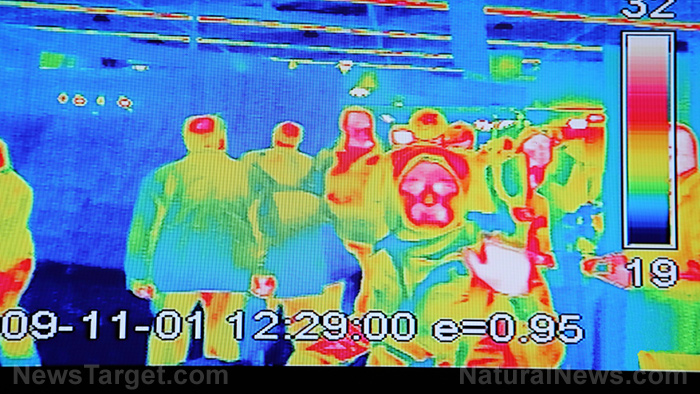
Keeping a low profile: How to avoid thermal cameras deployed by the surveillance state
Thursday, February 22, 2018 by Frances Bloomfield
http://www.privacywatch.news/2018-02-22-how-to-avoid-thermal-cameras-surveillance-state.html

Thermal imaging has now become part and parcel of surveillance technology, and for good reason — Warm bodies and hot equipment continuously give off an invisible heat known as infrared light. It’s undetectable by the human eye, but not to thermal imaging equipment. This is both a good and bad thing: good if you’re the one making use of thermal imaging to protect yourself, bad if you’re trying to avoid it. If you just so happen to fall squarely into the latter, then you’re in luck. Thermal imaging is effective, but it isn’t infallible. There are ways around it, and we’re going to teach them to you.
- Look for cover: The most basic method of beating thermal imaging is to avoid standing out, and one of the easiest ways to do this is to hide behind objects. But not just any will do. You’ll want a cover that can sufficiently block out your heat signature, so a light brush is next to useless in this scenario. Don’t risk it with drywall either; thermal imaging has reached a point of sophistication where single-layer brick walls pose no problem whatsoever. Instead, you should look for something large and dense, such as heavy undergrowth, dense tree canopies, or hilly terrain. Another good option is thick glass, which can serve as a surprisingly effective cover, provided you’re not dealing with military-grade thermal systems.
- Make some changes: Specifically, to your shape and behavior. As explained by Survivopedia.com, humans have recognizable features and actions that set us apart from animals. The human head, arms, and legs are unmistakable, as is our two-legged gait, so make things harder for your would-be observer by tucking yourself into a ball or laying down to transform your outline.
- Watch what you wear: It’s easy to think that simply piling on clothes until you look more clothing than man will be enough to fool thermal imaging equipment. You have a better chance of overheating than that happening. Wetsuits and arctic clothing won’t do a better job of disguising your body heat, nor will a suit cobbled together from space blankets. The best use for space blankets is as anti-infrared lining for your shelter and not for yourself. Fact is, there is no singular clothing option out there that will fully protect you from thermal imaging. Your best bet is to combine insulated clothing with mud to coat uncovered areas of your body, according to ModernSurvivalBlog.com.
- Keep an eye on your surroundings: Under the right circumstances, your environment can help you avoid detection. The presence of moisture in the air will make it more difficult for thermal imaging equipment to spot you, so stay near water if you can. Falling rain is even better. You can even use other heat sources to camouflage your own body heat. The more varied the heat signatures, the better since this throws off whoever’s looking for you. Conversely, more frigid backgrounds will make it easier to scope you out, so keep this in mind if you’re ever thrown into a scenario with lots of ice and snow. (Related: Preppers, staying fit to fight in cold weather is a challenge – but you must do it)
- Wait for the thermal crossover: This is a phenomenon wherein there is a loss of contrast between two infrared signatures, making them indistinguishable from one another. The thermal crossover occurs twice a day: after sunrise and after sunset. Depending on the weather conditions, the thermal crossover can last anywhere from a few seconds to several minutes. The latter happens during overcast or windy weather and high humidity. This means that under the right circumstances, you have a good couple of minutes to take advantage of the thermal crossover.
It may be difficult, but hiding from a thermal imager is totally possible. Remember that it’s just a piece of equipment and not a living, breathing thing that can strategize. It can’t; you can. You can outwit and outsmart it. And if you remember these tips then you most definitely will.
Visit Preparedness.news for even more guides on useful survival skills.
Sources include:
Tagged Under: Tags: future tech, Glitch, police state, preparedness, preparedness and survival, privacy, surveillance, survival, survival skills, thermal cameras, thermal imaging, Tyranny





